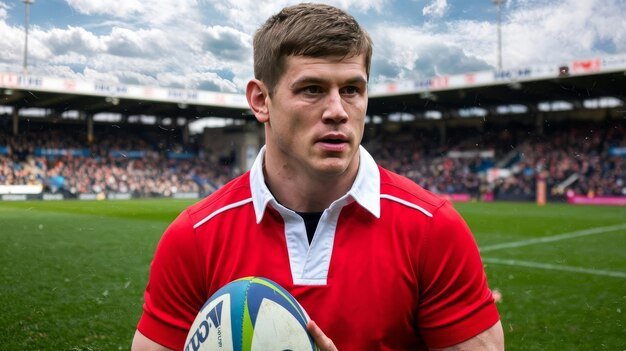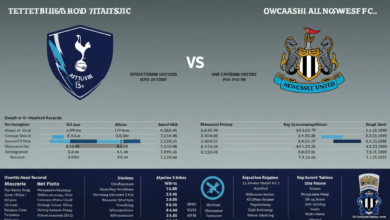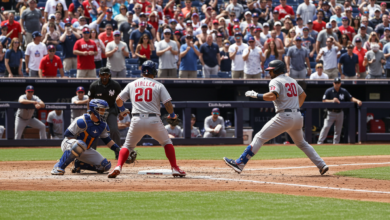The Highest Paid Rugby Player: A Deep Dive into Rugby’s Financial Elite

Rugby, a sport celebrated for its physical intensity and team spirit, has evolved from a passion-driven game to a lucrative profession for the best players in the world. While rugby may not rival football or basketball in terms of global salaries, its top athletes still command impressive earnings. The title of “highest-paid rugby player” shifts frequently, influenced by contracts, endorsements, and transfers to high-paying leagues.
This article explores the players who have risen to the top financially, the factors influencing their earnings, and the growing financial allure of rugby as a professional sport.
The Current Highest-Paid Rugby Player
As of 2024, South African fly-half Handré Pollard is often cited as the highest-paid rugby player globally. Playing for Leicester Tigers in England, Pollard reportedly earns close to £1.5 million annually, including his salary and performance bonuses. Pollard’s monumental pay reflects his role as a key player in South Africa’s 2019 Rugby World Cup victory and his exceptional skills on the field.
Pollard’s rise to financial prominence highlights how strategic positions such as fly-half and the performance in international competitions can significantly impact a player’s value. His earnings are bolstered by endorsements and his reputation as one of rugby’s most reliable goal-kickers.
Factors Influencing Rugby Salaries
Several factors contribute to how much rugby players earn. These include the league they play in, their position, international success, and their marketability.
1. League Competitiveness
Some leagues are known for offering higher salaries due to their financial backing and global appeal. For instance, Japan’s Top League, England’s Premiership Rugby, and France’s Top 14 are among the most lucrative.
France’s Top 14, in particular, is renowned for its big-spending clubs like Toulon and Racing 92. These teams attract international stars by offering multimillion-dollar contracts. New Zealand’s Super Rugby, while prestigious, typically cannot match the financial power of European clubs due to stricter salary caps.
2. Player Position
Certain positions, such as fly-halves, scrum-halves, and fullbacks, often command higher salaries. These roles are pivotal in controlling the game and delivering results, making players in these positions more valuable to their teams.
3. International Success
Winning or excelling in the Rugby World Cup can dramatically boost a player’s earning potential. Players from dominant rugby nations like New Zealand, South Africa, England, and Australia tend to receive better offers from clubs worldwide due to their international reputations.
4. Endorsements and Marketability
Off-field earnings also play a significant role. Marketable players who can secure endorsement deals with global brands or regional sponsors can earn millions beyond their club salaries.
Other Top-Earning Rugby Players
1. Charles Piutau (Bristol Bears)
New Zealand-born Charles Piutau has consistently ranked among the highest earners, with a reported annual salary of £1 million. His move from the All Blacks to Europe allowed him to capitalize on the financial opportunities in the English Premiership.
2. Finn Russell (Bath Rugby)
Scottish fly-half Finn Russell is another top earner, recently signing a deal with Bath Rugby that puts his salary close to £1 million annually. Known for his flair and creativity, Russell’s marketability has also contributed to his financial success.
3. Maro Itoje (Saracens)
England’s Maro Itoje is not only a standout lock but also a well-paid player with significant endorsement deals. His annual earnings, including sponsorships, reportedly approach £900,000, making him one of the wealthiest forwards in rugby.
4. Antoine Dupont (Toulouse)
The French scrum-half and captain Antoine Dupont has redefined the position with his exceptional skill and leadership. Playing for Toulouse, he earns around €800,000 annually, a figure likely to increase given his status as one of rugby’s best players.
The Evolution of Rugby Salaries
Rugby’s financial landscape has undergone significant changes since the sport turned professional in 1995. Before that, players were largely amateurs, juggling their athletic commitments with other jobs. The shift to professionalism opened the doors for lucrative contracts and global recognition.
1. European Clubs Driving Salaries
European clubs have played a pivotal role in increasing rugby salaries. France’s Top 14 and England’s Premiership consistently attract top talent by offering higher wages. Players from the Southern Hemisphere often move north for financial security, even if it means stepping away from international rugby commitments.
2. Influence of Private Ownership
Private ownership of clubs, particularly in Europe and Japan, has also contributed to rising salaries. Wealthy owners invest heavily in recruiting top players, creating competitive teams that draw fans and sponsors.
3. Salary Caps and Financial Fair Play
While some leagues have implemented salary caps to ensure financial sustainability and fairness, these caps can be circumvented by bonuses, sponsorship arrangements, or payments through secondary channels. This has led to debates about the financial disparity among clubs and leagues.
Challenges and Criticisms
1. Financial Sustainability
Despite the rising salaries of top players, many rugby clubs struggle financially. The COVID-19 pandemic exposed vulnerabilities in the sport’s business model, with several clubs facing bankruptcy or requiring financial bailouts.
2. Wage Gaps
While a handful of players earn millions, the majority of professional rugby players earn modest salaries, especially in smaller leagues or developing rugby nations. This disparity raises concerns about the sport’s accessibility and fairness.
3. Player Welfare
Higher salaries often come with increased expectations and playing demands. This raises concerns about player welfare, including the risk of burnout or long-term injuries.
Conclusion
The title of the highest-paid rugby player reflects more than just talent; it encapsulates the evolution of rugby as a professional sport and the growing financial stakes within it. Players like Handré Pollard, Charles Piutau, and Antoine Dupont have reaped the rewards of their skills, marketability, and strategic career moves.
While rugby may not yet match the financial heights of other global sports, its increasing financial allure signals a promising future. However, balancing the sport’s financial growth with sustainability and player welfare remains a critical challenge. As the game continues to evolve, the highest-paid rugby players will undoubtedly remain key figures in shaping the sport’s trajectory.



